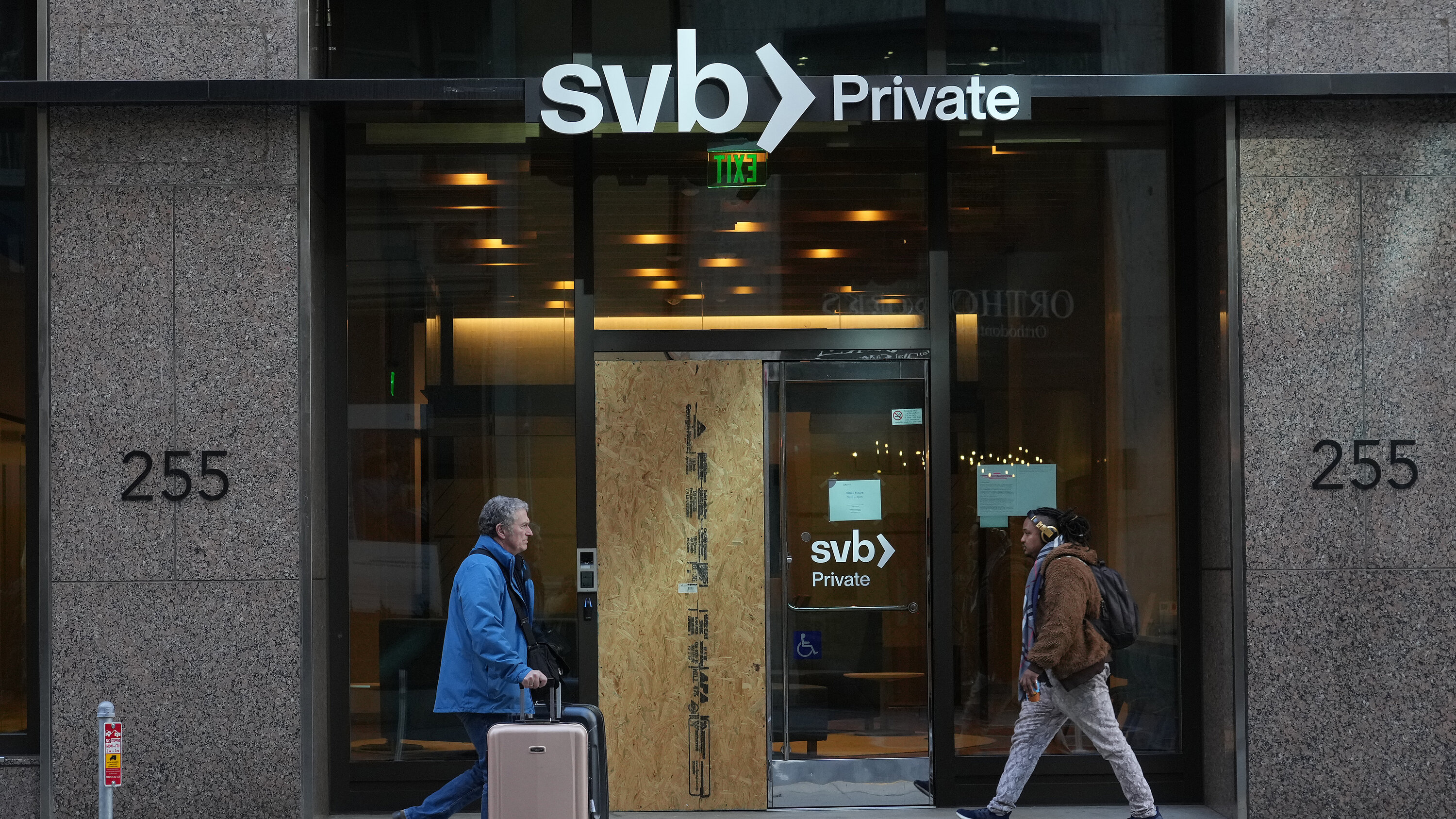What Happens If Banks Collapse - An Analytic Foresight
Economic health depends on the stability of financial institutions. A bank collapse violates its obligations to depositors, creditors, and others, causing a loss of confidence that can ripple through the economy. Understanding why banks fail and how to handle them is crucial to understanding what happens if banks collapse.
Author:Emmanuella SheaReviewer:Camilo WoodMar 01, 2024145 Shares8K Views

Economic health depends on the stability of financial institutions. A bank collapse violates its obligations to depositors, creditors, and others, causing a loss of confidence that can ripple through the economy. Understanding why banks fail and how to handle them is crucial to understanding what happens if banks collapse.
Main Causes Of Bank Collapses
The main causes of bank collapses include factors such as bad loans and poor credit underwriting, ineffective risk management, economic downturns, risky lending practices, sudden liquidity crises, and excessive risk-taking. Additionally, banking crises can result from non-performing loans, undercapitalization, and fraud. Ultimately, when a bank's assets fall below its liabilities, or it cannot meet its obligations to depositors, it may lead to a collapse. Insider fraud and mismanagement also contribute to significant financial losses and can lead to bank failures.
Immediate Consequences Of A Bank Collapse
The immediate consequences of a bank collapse include disruption of financial services to clients, potential loss of deposits, decrease in credit availability, and uncertainty for the bank's clients about accessing their funds. Additionally, outstanding checks or payment requests presented after the bank failure will be returned unpaid.
Long-Term Effects Of Bank Collapses On The Economy
The long-term effects of bank collapses on the economy can be profound. They can lead to a significant decline in output and a rise in unemployment, causing a contraction in the money supply and a decline in spending, investing, and GDP. Bank failures can also result in weaker bank lending, government borrowing difficulties, more inflation, fewer jobs, lower house prices, and less consumer spending. Additionally, they can negatively impact domestic and international stock markets, leading to substantial repercussions on global stock markets.
Historical Examples Of Significant Bank Collapses And Their Impact
Historical examples of significant bank collapses include events such as the collapse of Silicon Valley Bank and Signature Bank, and the failure of First Republic Bank. These events led to substantial consequences, where depositors lost their life savings and the collapses contributed to major financial losses. Additionally, there have been large-scale bank failures in the U.S., such as the Panic of 1819 and the Panic of 1825, which were part of significant economic recessions marked by widespread bank failures and financial turmoil.
Potential Solutions Or Preventive Measures To Mitigate The Impact Of Bank Collapses
The potential solutions or preventive measures to mitigate the impact of bank collapses include better regulation and supervision by the Federal Reserve, allowing nonbanks to access the payment system, strengthening regulatory oversight, requiring all banks to have more equity than is currently required, and diversifying banking relationships to mitigate the risk of a bank failure. Additionally, proactive steps such as assessing the overall health of banks, participating in stress tests, and maintaining adequate capital and liquidity can contribute to preventing future bank failures.
Past Bank Collapses
- Silicon Valley Bank- Silicon Valley Bank failed due to rapid interest rate changes, which hurt its long-term bond portfolio and caused significant losses.
- Signature Bank- Signature Bank failed after the close, demonstrating financial sector risks.
- 2008 Financial Crisis- Lehman Brothers and Bear Stearns' collapse and near-failure in 2008 caused a global liquidity crisis that prompted widespread reforms to prevent future crises.
These incidents highlight the importance of bank risk management and the financial system's interconnectedness, where one institution's failure can have far-reaching effects.
Insurance And Regulation Role If A Bank Fails
In the event of a bank failure, insurance and regulation play crucial roles in protecting depositors, maintaining financial stability, and mitigating the impact on the economy. Let's explore the roles of insurance and regulation in this scenario.
Deposit Insurance
- Deposit insurance is a key component of financial safety nets designed to protect depositors' funds in the event of a bank failure. In many countries, government-backed deposit insurance programs guarantee a certain level of protection for depositors' funds, typically up to a specified limit per account.
- If a bank fails, deposit insurance ensures that depositors receive compensation for their eligible deposits, up to the insured limit. This helps maintain public confidence in the banking system and prevents mass withdrawals that could exacerbate financial instability.
Regulatory Oversight
- Regulatory agencies, such as central banks and financial regulatory authorities, play a critical role in overseeing and regulating banks to ensure their safety and soundness. These agencies establish and enforce prudential regulations, capital requirements, and risk management standards to mitigate the risk of bank failures.
- In the event of a bank failure, regulatory authorities work closely with deposit insurance agencies to manage the resolution process and minimize disruption to financial markets and the economy. They may intervene to facilitate the orderly wind-down of the failed bank, protect depositors' interests, and prevent contagion to other institutions.
Resolution Mechanisms
- Regulatory authorities have established resolution mechanisms and frameworks to manage the orderly resolution of failed banks. These mechanisms aim to maintain financial stability, protect depositors' funds, and minimize the use of taxpayer funds in the resolution process.
- Resolution options may include selling the failed bank's assets and liabilities to another financial institution, transferring deposits to a healthy bank, or placing the bank into receivership and liquidating its assets to repay depositors and creditors.
Systemic Risk Management
- Regulatory authorities are also responsible for monitoring and managing systemic risks that could arise from bank failures. They conduct stress tests and risk assessments to identify vulnerabilities in the financial system and implement macroprudential policies to address systemic risks.
- In the event of a bank failure, regulatory authorities may take additional measures, such as providing liquidity support to financial institutions, coordinating with other regulatory agencies and central banks, and communicating with market participants to maintain confidence and stability.
Public Communication And Transparency
- Transparency and effective communication are essential during periods of financial distress. Regulatory authorities provide timely and accurate information to the public about the status of failed banks, deposit insurance coverage, and resolution efforts.
- Clear and transparent communication helps mitigate uncertainty and panic, fosters trust in the regulatory system and facilitates an orderly resolution process.
What Happens If Banks Collapse - An Analytic Foresight - FAQs
How Does A Bank Collapse Affect The Broader Economy?
A bank collapse can have significant ripple effects on the broader economy. It can lead to financial panic, loss of confidence in the banking system, and disruptions in credit availability. This, in turn, can dampen consumer spending, business investment, and overall economic activity, potentially leading to a recession or economic downturn.
Is It Possible To Prevent Bank Collapses Altogether?
While it may not be possible to prevent bank collapses entirely, regulatory authorities and policymakers implement measures to mitigate the risk and impact of such events. This includes implementing prudential regulations, conducting stress tests, and providing oversight to ensure banks maintain adequate capital and risk management practices.
What Lessons Can We Learn From Past Bank Collapses?
Past bank collapses provide valuable lessons about the importance of effective regulation, prudent risk management, and crisis preparedness. They underscore the need for transparency, accountability, and resilience in the banking sector to safeguard financial stability and protect stakeholders' interests.
Conclusion
In conclusion, the collapse of banks can have profound implications for the financial system and the economy as a whole. While such events are rare and often mitigated by regulatory intervention and safety nets, they underscore the importance of prudent risk management, effective regulation, and robust crisis preparedness in safeguarding financial stability and protecting the interests of depositors and investors.
Jump to
Main Causes Of Bank Collapses
Immediate Consequences Of A Bank Collapse
Long-Term Effects Of Bank Collapses On The Economy
Historical Examples Of Significant Bank Collapses And Their Impact
Potential Solutions Or Preventive Measures To Mitigate The Impact Of Bank Collapses
Past Bank Collapses
Insurance And Regulation Role If A Bank Fails
Deposit Insurance
Regulatory Oversight
Resolution Mechanisms
Systemic Risk Management
Public Communication And Transparency
What Happens If Banks Collapse - An Analytic Foresight - FAQs
Conclusion

Emmanuella Shea
Author

Camilo Wood
Reviewer
Latest Articles
Popular Articles
